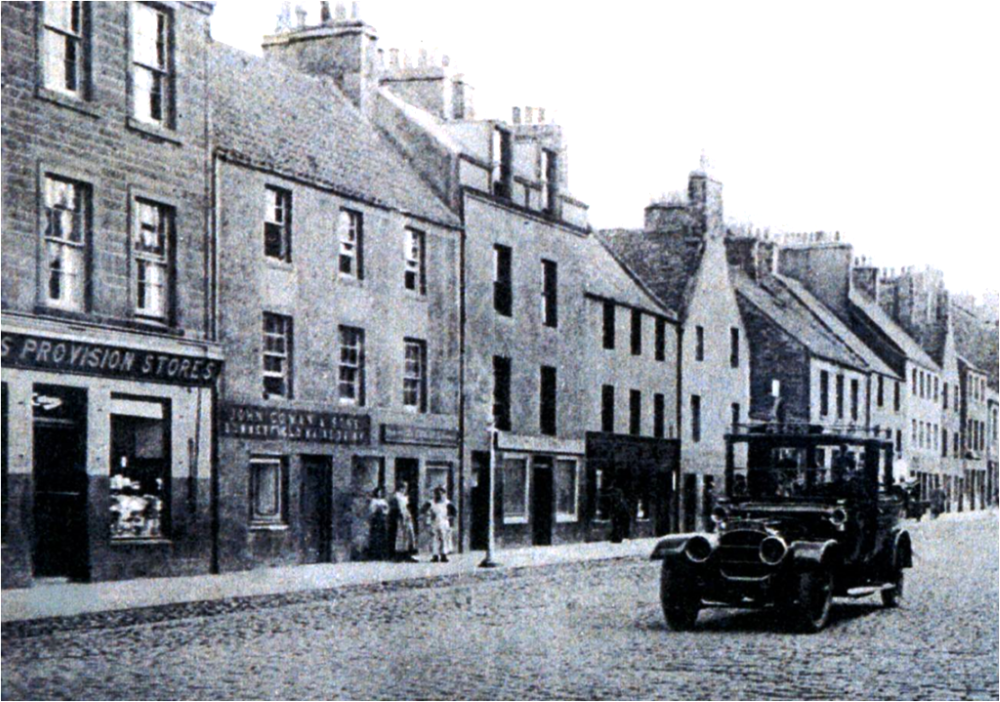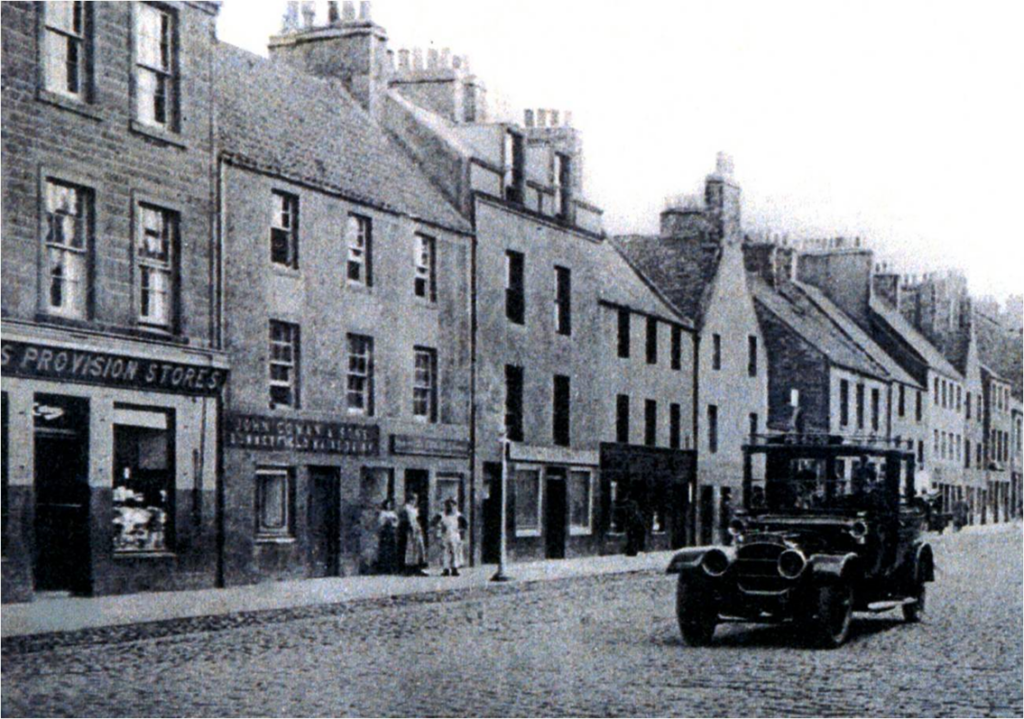The November 2024 DDHS talk was given by Dr Pat Simpson who is a member and volunteer for the Society. Below are 3 slides from the talk with explanatory comments by Pat Simpson. Additional links by Dr James Herring.
Summerfield House and Summerfield Mains
The prominent Dunbar family, the Falls (family history), fell on hard times in the early 1800s. The farmland called Summerfield, that they owned, was bought by Tynninghame and Whitekirk farmer Charles Nelson, a bachelor. He built Summerfield House and within the grounds were stables and a gatehouse, where the gardener lived. A gardener was needed as the street and houses, at what is now Summerfield Park, are situated within what was the grounds of Summerfield House when it was first built. Charles Nelson married and had two sons with his young wife, Mary. He died while they were youngsters. Mary and the children lived in the house until the boys left home, to become tenant farmers at Skateraw. Mary moved to Southfield House and Summerfield House was rented out to successive commanders of the local military regiment.
Nearby land, Summerfield Mains, was used for dairy farming. While Walter Cowan owned the land, when his son John Cowan took over, John sold the land to raise capital. John continued to farm as a tenant farmer and used the capital to buy properties on the High Street which were used to sell provisions as well as dairy produce. The photo below shows John Cowan’s shop in Dunbar High Street.

In the 1930s and 1940s, Robert Blair, then John Blair, ran the dairy at Summerfield Mains. Eventually, dairy farming at Summerfield became no longer viable, and the land was sold to the council. The Tree Scheme was built on the land and the architect figureheading the designs was Sir Basil Spence, who is better known for designing Coventry Cathedral. You can read more about the pros and cons of the houses in the Tree Scheme in one of James Herring’s blog posts. The photo below shows one of the Spence drawings for the houses in the Tree Scheme.

Charles Scott, the tenant farmer of Newtonlees, died in 1888. His son, Alexander Scott, chose a military rather than a farming career. When Mary Nelson died in 1888 it was decided this was the time to sell Summerfield House. Summerfield House was bought by Alexander Scott. A house was built within the extended grounds for his mother Isabella Scott to live in, a quirky white art deco building with red trim. She was not happy with the building and after a few years, she requested a bedroom extension to be build over the front porch. This is probably the first bedroom with an en suite bathroom in Dunbar. The house name is Bonard and there is a current proposal to demolish it – see the East Lothian Courier report, which contains a photo of the house. The photo below shows a plan of the additions for Mrs Scott as note on the top left.


You must be logged in to post a comment.